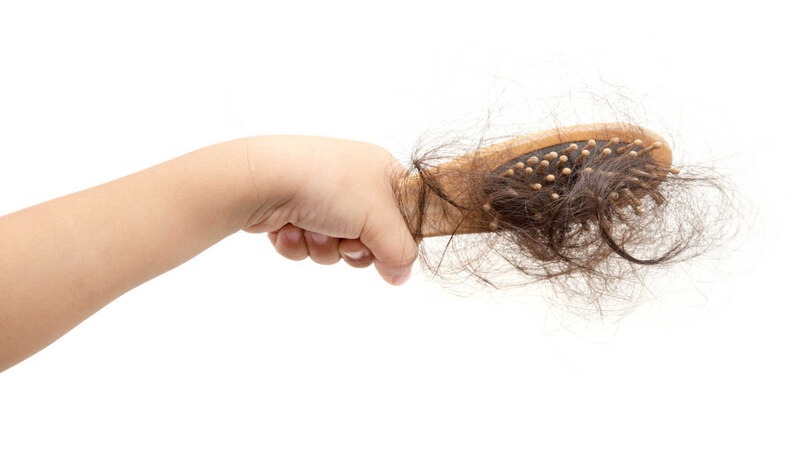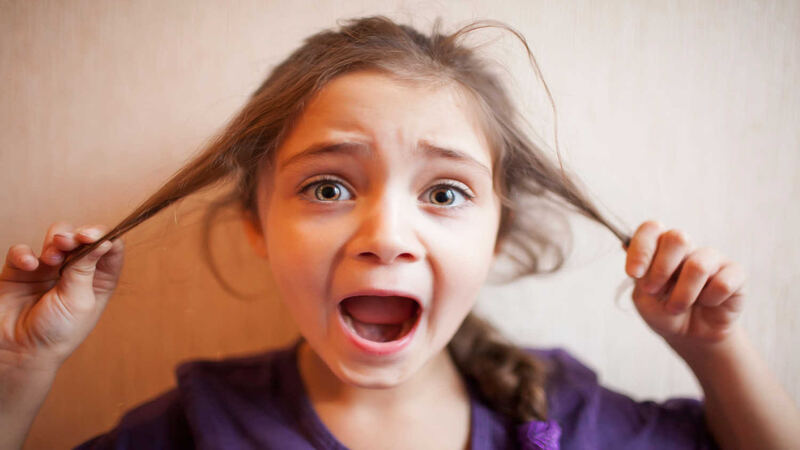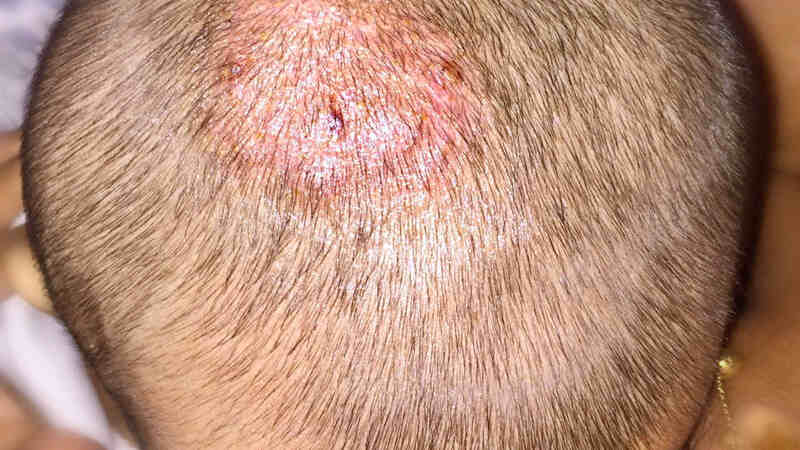
Is your toddler suddenly losing hair? Hair loss in toddlers can be surprising—and worrying—for many parents. While it’s often harmless, it can sometimes point to underlying issues. From common causes like friction or diet to medical conditions, understanding why your toddler is losing hair is key. In this article, we’ll explore the main causes of hair loss in toddlers and help you figure out what’s normal and when to seek advice if your toddler is losing hair on the head.
In most cases, toddler hair loss is temporary and treatable. However, knowing the possible causes early can ease your worries and guide the right care. Whether it’s a minor issue or something that needs attention, staying informed makes all the difference.
Is It Normal for Toddlers to Lose Hair?
The hair growth cycle in a toddler is somewhat similar to that of an adult. The active hair growth phase of a toddler lasts anywhere from two to six years. Following this, the hair enters the telogen or resting phase, during which there is no growth at all. The telogen phase lasts approximately three months, after which the hair naturally falls out, and a new one develops.
If you’re wondering whether it’s normal for toddlers to experience hair thinning, the answer is a comforting yes! In India, hair loss is often noticed after rituals like mundan, where the head is shaved, and new hair growth may seem slow or uneven. Mild hair thinning in toddlers can also happen due to friction from pillows, hats, or frequent head rubbing, especially in active sleepers.
However, if you notice a toddler’s bald spot, excessive shedding, or hair falling out in patches, it could signal underlying issues like fungal infections (common in humid regions), nutritional deficiencies (like low iron or protein), or even early signs of alopecia. While some hair loss is a natural part of development, persistent or unusual patterns should be evaluated by a pediatrician or dermatologist.
Top 8 Causes of Hair Loss in Toddlers

Hair loss in toddlers can be caused due to several factors, which may be medical or nonmedical. Some of the probable causes behind your toddler’s hair loss are-
1. Tinea Capitis
Often known as ringworm, it is a contagious fungal condition that may cause your toddler to develop scaly patches on the scalp. (1). These patches will be devoid of hair. The hair may break on the surface of the scalp and appear as black dots. Tinea capitis is usually treated with antifungal medicines and medicated shampoo.
2. Trichotillomania
It is also known as a hair-pulling disorder. (2) If your toddler has a habit of pulling, plucking, or twisting their hair, they may experience hair loss in patchy, asymmetrical patterns. These patches will have hair of varying lengths due to the constant pulling and plucking. Trichotillomania is often triggered by stress or anxiety. So, if you notice your toddler pulling on their hair, it’s better to consult a doctor and address the underlying issue, rather than scolding or punishing them.
[Read: Baby Pulling Own Hair]
3. Telogen Effluvium
This condition occurs when a toddler’s normal hair growth cycle is disrupted. It can be caused by factors such as stress, certain medications, a high fever, or surgery requiring general anesthesia. In this situation, the hair stops growing and enters the telogen or resting phase, leading to a halt in new hair growth. After a few weeks or months, the hair that has entered this phase may fall out, resulting in bald patches on the scalp. There are no specific diagnostic tests or treatments available for this condition. However, once the stressor is addressed, hair typically grows back on its own. (3)
4. Nutritional Deficiency/Overdose
Nutritional deficiency is a significant, although not very common, cause of hair loss in toddlers. (4) A lack of essential nutrients such as Vitamin D, biotin, zinc, iron, Vitamin C, or calcium can contribute to hair loss. Conversely, an excess of Vitamin A can also lead to hair loss.
5. Traction Alopecia
The condition known as traction alopecia may develop due to physical trauma, such as that caused by tight ponytails or braids. So, avoid too tight hairstyles for your little one. (5)
6. Endocrine Issues
Hypothyroidism, though rare in toddlers, can also be an underlying cause of hair loss. This can be ascertained by a blood test, and the pediatrician will begin treatment accordingly.
7. Alopecia Areata
Alopecia, especially alopecia areata, can affect toddlers and is sometimes mistaken for normal hair loss. It’s an autoimmune condition where the immune system attacks hair follicles, causing sudden hair fall. Common signs of alopecia in toddlers include round or oval bald patches on the scalp, smooth areas without redness or flaking, and hair falling out in small clumps. You might also notice thinning hair in one area or short broken hairs around bald spots. In some cases, eyebrows or eyelashes may thin as well. While it’s not painful, alopecia can be worrying for parents. If your toddler has a bald spot that’s growing or not improving, it’s important to consult a pediatric dermatologist for early treatment.
[Read: Alopecia Areata in Children]
8. Hair Abuse
Brushing the hair vigorously, tying it too tight, combing wet hair, rubbing it too harshly, all of these inconspicuous activities may also lead to hair loss in toddlers.
How Can You Prevent Hair Loss in Toddlers?

Although hair loss is a worrying condition in most cases, it’s curable and harmless. Proper nurturing and caring for your toddler’s hair may actually help prevent hair loss. Here are a few tips to prevent hair loss in toddlers-
- Use a mild shampoo specifically formulated for toddlers.
- Don’t wash your toddler’s hair more than twice a week, since excessive washing will dry out the scalp.
- Don’t scrape the scalp with your nails while washing the toddler’s hair.
- Use a soft-bristle brush or a wide-toothed comb.
- Avoid using towels, pillow covers, etc., made of harsh or rough material.
- Don’t make too tight hairdos.
Best Shampoo for Toddler Hair Loss
When choosing a shampoo for a toddler experiencing hair loss, it’s essential to opt for a gentle, chemical-free formula. Look for shampoos that are mild, tear-free, and free from sulfates, parabens, and artificial fragrances, as these ingredients can irritate your child’s sensitive scalp and worsen hair fall.
For the best results, choose shampoos that contain natural ingredients like coconut oil, aloe vera, hibiscus, or amla, which are known to nourish the scalp and strengthen hair. Also, make sure the product is pH-balanced, hypoallergenic, and dermatologist-tested or pediatrician-approved to ensure it’s safe for regular use on toddlers.
Note: Use shampoo only 2–3 times a week to avoid stripping natural oils.
Home Remedies For Hair Loss in Toddlers

While there is always medicine for any ailment, home remedies can also be effective. If your toddler is experiencing hair loss, consider trying the following home treatments.
- Gently massage your toddler’s scalp with coconut, almond, or olive oil. It is better if you warm it slightly first
- Use rice water to rinse. There are a lot of amino acids in rice water, which help to make the hair thick and glossy
- Apply a mask made from soaked and ground fenugreek seeds.
- Onion juice application on the scalp also aids and promotes hair growth, resulting in reduced hair fall.
- Mix a few drops of castor oil with any other oil like coconut, almond, etc., and massage on your little one’s scalp to prevent hair fall.
- Aloe vera gel can also be used to reduce hair fall and itchiness (if any). It has antioxidant, anti-inflammatory, and antibacterial properties, which are very beneficial.
- Instill good hair care habits in the toddler. Teach them how to care for their hair from early on.
When Should You Be Worried about Hair Loss in Toddlers?

While occasional hair loss is usually harmless, there are times when it may need medical attention. You should be concerned if your toddler has:
- Sudden or excessive hair shedding
- A toddler bald spot that’s growing or not improving
- Redness, itching, or scaling on the scalp (possible fungal infection)
- Hair falling out in round patches (may suggest alopecia areata)
- Signs of poor nutrition, delayed growth, or low energy
If your child’s hair hasn’t regrown months after a mundan or if there’s noticeable discomfort, it’s best to consult a pediatrician or dermatologist. Early diagnosis can help treat any underlying issues and support healthy hair regrowth.
Observation plays a crucial role in diagnosing the cause of hair loss. By carefully noting the symptoms, a precise diagnosis can often be made. The good news is that once the underlying reason for hair loss in toddlers is correctly identified, effective treatment can be administered.
FAQ’s
1. Can a Lack of Vitamins Cause Hair Fall in Toddlers?
Proper nourishment is crucial to physical well-being. Lack of essential nutrients like protein and vitamins may cause hair loss in toddlers. Lack of certain nutrients like iron, zinc, niacin, biotin, protein, and amino acids has been linked to hair thinning and hair loss.
2. Can an Iron Deficiency Cause Hair Loss in Toddlers?
Your toddler’s body will be unable to make hemoglobin if they do not have enough iron in their diet. Hemoglobin is responsible for transporting oxygen throughout the body, which is necessary for developing and repairing all cells. This includes the cells that are responsible for hair growth.
3. Which Vegetables Help in Toddler’s Hair Growth?
Vegetables like carrots, spinach, onions, tomato, beetroot, sweet potatoes, beans etc. are good sources of beta carotene, Vitamin A and other nutrients. Hence, including these in your toddler’s diet will help in hair growth.
Read Also: Dandruff in Toddlers – Causes and Top Home Remedies to Treat
Reference
- Ahmad M. Al Aboud; Jonathan S. Crane; King Abdullah Medical City, Sampson Regional Med Ctr / Campbell Univ – https://www.ncbi.nlm.nih.gov/books/NBK536909/
- Grant JE. Trichotillomania (hair pulling disorder). Indian J Psychiatry – https://pmc.ncbi.nlm.nih.gov/articles/PMC6343418/
- Chen V, Strazzulla L, Asbeck SM, Bellodi Schmidt F. Etiology, management, and outcomes of pediatric telogen effluvium: A single-center study in the United States. Pediatr Dermatol – https://pubmed.ncbi.nlm.nih.gov/36263718/
- Al-Refu K. Hair loss in children: common and uncommon causes; clinical and epidemiological study in Jordan. Int J Trichology – https://pmc.ncbi.nlm.nih.gov/articles/PMC3999647/
- Hasnain A. Syed1; Feroze Kaliyadan, Sheikh Zayed Hospital, Lahore, Sree Narayana Institute of Medical Sciences – https://www.ncbi.nlm.nih.gov/books/NBK470434/
